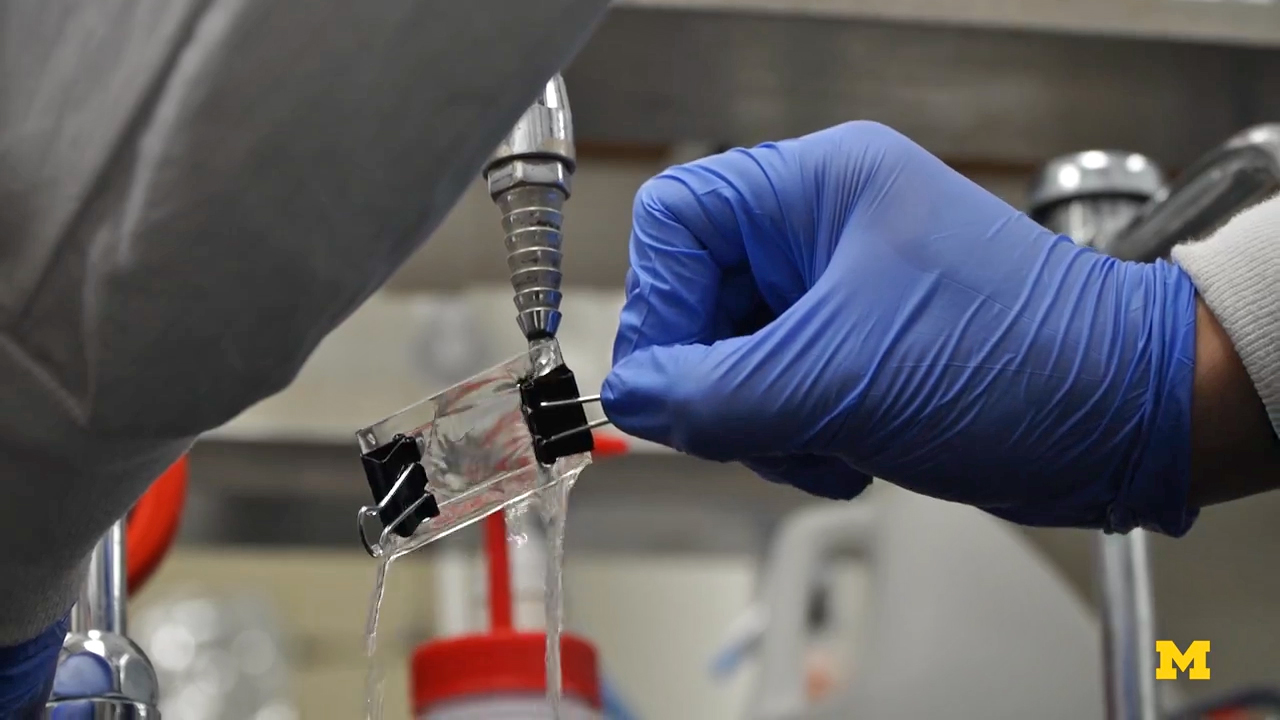You might not think that the teeth in your mouth have much in common with the massive fangs you’ll find in a T-rex skull. But at the microscopic level, the core structure of tooth enamel hasn’t changed much over the ages. So, scientists are once again copying a tried-and-true Mother Nature design to potentially improve the strength and safety of aeroplanes.
What makes tooth enamel so special? When you think about it, your teeth have to be strong enough to crunch and tear through food, but also endure decades of vibrations from chewing, or just walking around, without cracking or crumbling to dust. Most human-made materials are only designed to survive one or the other. Metal is strong, but can develop stress cracks over time, while rubber can easily absorb vibrations, but isn’t exactly the best material to build aeroplanes out of.

Animation: YouTube
At the microscopic level, tooth enamel is made up of columns of hard ceramic crystals that are surrounded by soft organic proteins. As pressure is put on a tooth, from biting or chewing, those columns compress and bend, but through friction the surrounding soft protein material absorbs excess energy that might otherwise cause damage to the tooth’s structure. It’s a design that’s worked since the dinosaurs roamed the earth, so it only makes sense to try and copy it.
Nicholas Kotov, a professor of chemical engineering at the University of Michigan College of Engineering, whose early investigations revealed how little tooth enamel has changed over evolutionary time, and Bongjun Yeom, a post-doctoral researcher, have managed to create an artificial version that exhibits the same resilient properties. Instead of ceramic crystals and proteins, however, their enamel is made from zinc oxide nanowires surrounded with a soft polymer material, which is further detailed in their study published this week in the journal Nature.
Artificial tooth enamel could one day lead to the development of materials that could be a better alternative to the metals currently used to build aeroplane fuselages and automobile chassis. The fake enamel is not only lighter, the researchers say it’s able to withstand the constant vibrations, pressures, plus expansions and compressions that metals experience during flights, which overtime lead to microscopic cracks and eventual structure failure — the last thing you want at 9,144.00m.
The new materials could also be used in electronics, especially those that aircraft and rockets rely on, that have to endure extreme G-forces and vibrations — far more than the iPhone tucked away in your back pocket does. But Kotov and his team still need to find a good way to mass produce it.

Still: YouTube
Manufacturing the artificial tooth enamel, at least in its current form, is incredibly time-consuming. Forty layers, built up one-by-one, were required to make just a single micrometre — just a thousandth of a millimetre thick — of the material. And that was just a small sample made on a microscope slide. To get enough of the material to build an entire plane would take years, making it prohibitively expensive despite all the advantages. But since this is just the first steps in creating this faux enamel, over time the process will be refined until one day, perhaps, you’re jetting off to Florida inside a giant wisdom tooth.
[Nature via University of Michigan via New Atlas]
